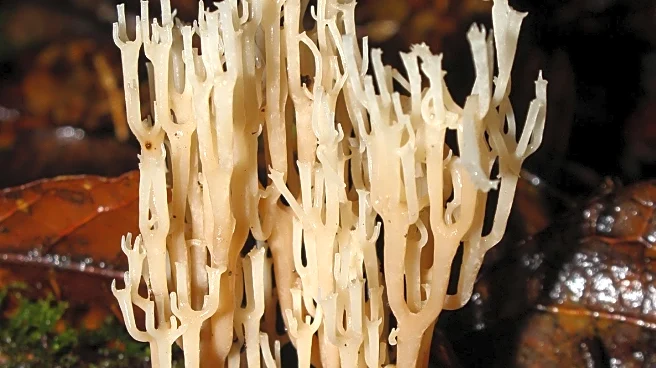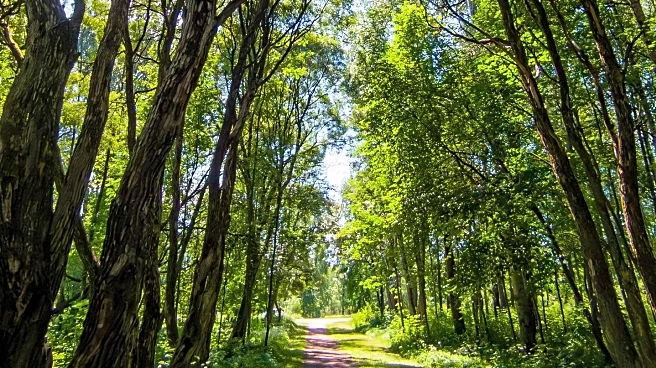What's Happening?
The Candelabra Coral fungus, previously thought extinct in the UK, has been discovered in the New Forest for the first time. Known scientifically as Artomyces pyxidatus, this fungus was rediscovered in Suffolk
in 2012 and has since been recorded in at least ten English counties. The New Forest sightings mark a significant event, as the area is known for its rich fungal diversity, hosting nearly 3,000 species. The fungus typically grows on decaying wood in damp woodland environments and can reach up to 10cm in height. The discovery was made as part of the Species Survival Fund project, which aims to protect and expand habitats across the New Forest.
Why It's Important?
The discovery of the Candelabra Coral fungus in the New Forest underscores the region's biodiversity and the importance of conservation efforts. The New Forest is a national biodiversity hotspot, home to an estimated 20,000 species. Fungi play a crucial role in ecosystems, contributing to nutrient cycling and providing food for wildlife. The Species Survival Fund project, which facilitated this discovery, is a collaborative effort to restore habitats and increase biodiversity. This initiative not only benefits the environment but also supports local conservation organizations and enhances public awareness of ecological issues.
What's Next?
The Species Survival Fund project will continue its efforts to restore and protect habitats in the New Forest. This includes removing non-native species to improve woodland habitats, which should increase the diversity and abundance of fungi and other species. The project involves multiple organizations, including Wild New Forest, which conducts wildlife surveys to inform management actions. As the project progresses, it is expected to further enhance the region's biodiversity and provide valuable data for future conservation strategies.
Beyond the Headlines
The discovery of the Candelabra Coral fungus highlights the broader implications of habitat restoration and conservation. It serves as a reminder of the delicate balance within ecosystems and the potential for rediscovering species thought to be extinct. The project also emphasizes the importance of collaboration among conservation groups and the role of public engagement in preserving natural environments.











